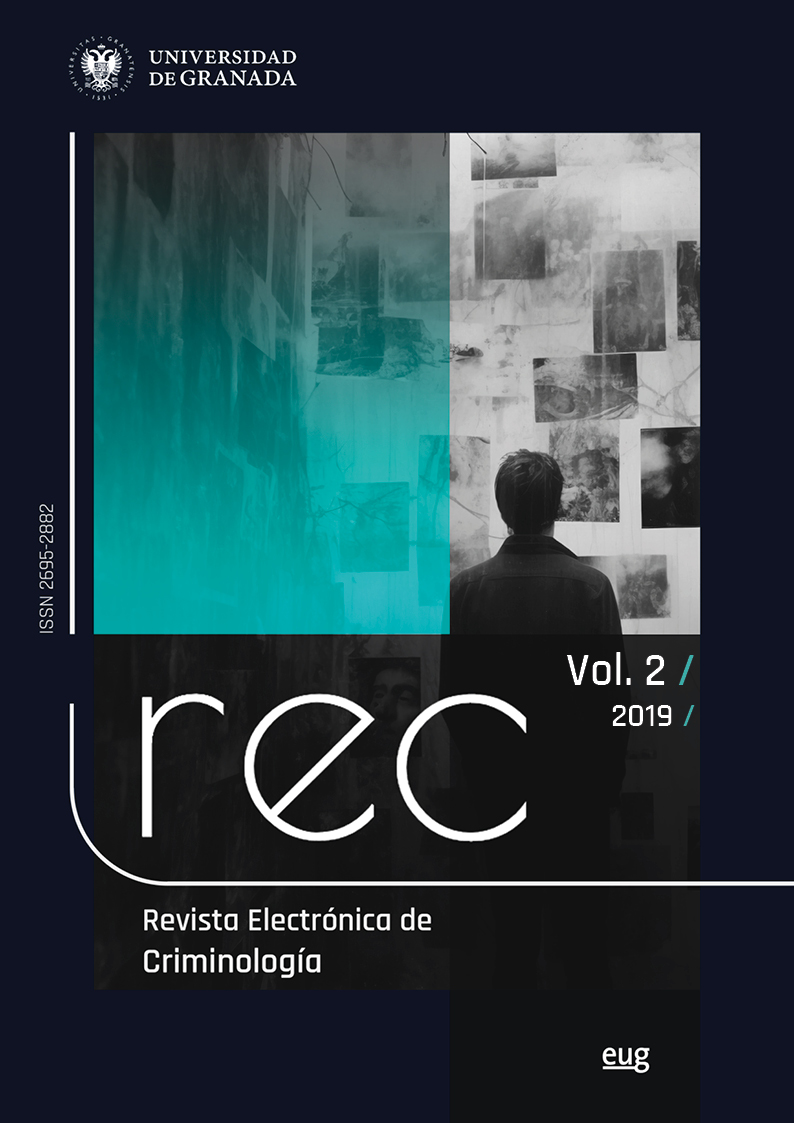Prevalencia, factores asociados y diferencias de género en el cumplimiento de la propiedad intelectual: una revisión sistemática
DOI:
https://doi.org/10.30827/rec.2.33277Palavras-chave:
propiedad intelectual, cumplimiento normativo, prevalencia, género, revisión sistemáticaResumo
El interés por el desarrollo de modelos efectivos para la protección de la propiedad intelectual está trasladándose en la actualidad desde los tradicionales enfoques eminentemente normativos a las propuestas preventivas informadas desde las evidencias empíricas. Por ello, en el marco del proyecto de investigación InfractXr, el presente estudio desarrolla una revisión sistemática de la literatura científica de la última década con el triple propósito de (1) detectar aquellas conductas de vulneración de la propiedad intelectual más estudiadas desde una perspectiva empírica, (2) establecer los factores más relevantes en la explicación del cumplimiento de la propiedad intelectual y (3) analizar diferencias de género tanto en el cumplimiento normativo de la propiedad intelectual como en factores asociados. Con una muestra formada por 13 estudios, los resultados nos indican, en primer lugar,que la pirateríaes laconducta más estudiada desde una perspectiva empírica; en segundo lugar, que la teoríadelaprendizajesocial, las técnicas deneutralización, la teoría del autocontrol, la influencia de la ley Hadopi, el modelo de la disuasión, el modelo de la legitimidad o la teoría de la influencia social ofrecen marcos explicativos prometedores del cumplimiento normativo y, finalmente, que las mujeres muestran menores niveles de incumplimiento que los hombres.
Referências
Akers, R.L. (1998). Social learning and social structure: A general theory of crime and deviance. Northeastern University Press, Boston.
Altschuller, S., y Benbunan-Fich, R. (2009). Is the music the new prohibition? What students reveal through an ethical dilemma. Ethics and Information Technology, 11(1), pp. 49-56.
Arnold, M. A., Darmon, E., Dejean, S., y Penard, T. (2014). Graduated Response Policy and the Behavior of Digital Pirates: Evidence from the French Three-Strike (Hadopi) Law.
Bercovitz Rodríguez-Cano, A. (1996), Riesgos de las nuevas tecnologías en la protección de los derechos intelectuales. La quiebra de los conceptos tradicionales del derecho de propiedad intelectual. Soluciones jurídicas, en El derecho de propiedad intelectual y las nuevas tecnologías.
Burfeind, J., y Bartusch, D. J. (2015). Juvenile delinquency: An integrated approach. London: Routledge.
Castro-Toledo, F.J. (2019). El cumplimiento de las normas de propiedad intellectual: hacia una comprensión de su prevalencia real y factores asociados. Revista Lex Mercatoria, 13, 27-43
Cook, P. J., y Laub, J. H. (1998). The unprecedented epidemic in youth violence. Crime and Justice, 24, pp. 27-64.
Danaher, B., Smith, M. D., Telang, R., y Chen, S. (2014). The effect of graduated response anti-piracy laws on music sales: evidence from an event study in France. The Journal of Industrial Economics, 62(3), 541-553.
Dehghanniri, H., y Borrion, H. (2019). Crime scripting: A systematic review. European Journal of Criminology. DOI: 10.1177/1477370819850943
Depoorter, B., Van Hiel, A., y Vanneste, S. (2012). Copyright backlash. Southern California Law Review., 84(6), pp 1251-1293.
Espigares Huete, J.C. (2019). Perspectives on the infringement of intellectual property rights through illegal downloads. Spanish Journal of Legislative Studies (1), p1-27. DOI: 10.21134/sjls.v0i1.1706.
Gómez Bellvís, A.B (2019): “Crónica de una ineficacia anunciada: Un estudio sobre los factores asociados al cumplimiento del ámbito de la propiedad intelectual”, InDret, 1.19, pp 1-25.
Goodenought, O. R., y Decker, G. J. (2008). Why do good people steal intellectual property?.,Berkman Center Research Publication, (2).
Gopal, R., Sanders, G. L., Bhattacharjee, S., Agrawal, M., y Wagner, S. (2004). A behavioral model of digital music piracy. Journal of Organizational Computing and Electronic Commerce, 14, 89-105.
Gough, D., Oliver, S., y Thomas, J. (2012). An Introduction to Systematic Reviews. Los Angeles: Sage.
Gunter, W. D., Higgins, G. E., y Gealt, R. E. (2010). Pirating Youth: Examining the Correlates of Digital Music Piracy among Adolescents. International Journal of Cyber Criminology, 4.
Hinduja, S., y Higgins, G. E. (2011). Trends and patterns among music pirates. Deviant Behavior, 32(7), pp 563-588.
Lee, B., Jeong, S., y Paek, S. Y. (2019). Determinants of digital piracy using deterrence, social learning and neutralization perspectives. InternationalJournal of ComparativeandAppliedCriminal Justice, 1–14.
MiróLlinares, F.(2003).Laprotección delapropiedadintelectualen lasociedad de la información. Madrid: Dykinson.
Miró Llinares, F. (2005). Internet y delitos contra la propiedad intelectual. Madrid: Fundación autor.
Miró Llinares, F. (2007). El futuro de la propiedad intelectual desde su pasado. La historia de los derechos de autor y su porvenir ante la revolución de Internet. Revista de la Facultad de Ciencias Sociales y Jurídicas de Elche, 1(2).
Miró Llinares, F. (2012). El cibercrimen. Fenomenología y criminología de la delincuencia en el ciberespacio. Madrid: Marcial Pons.
Moffitt, T. E., Caspi, A., Rutter, M., y Silva, P. A. (2001). Sex differences in antisocial behaviour: Conduct disorder, delinquency, and violence in the Dunedin Longitudinal Study. Cambridge: Cambridge University Press.
Morris, R. G., y Higgins, G. E. (2010). Criminological theory in the digital age: The case of social learning theory and digital piracy. Journal of Criminal Justice, 38(4), pp 470-480.
Siponen, M., Vance, A., y Willison, R. (2012). New insights into the problem of software piracy: The effects of neutralization, shame, and moral beliefs. Information & Management, 49(7–8), 334–341.
Sykes, G., y Matza, D. (1957). Techniques of neutralization: A theory of delinquency. American Sociological Review, 22, pp 664–670.
Villavieja Beck, M. A., y Cerezo Domínguez, A. I. (2016). La piratería doméstica y el autocontrol: Un estudio exploratorio entre universitarios. Boletín criminológico, (166), 1-9.
Wingrove, T., Korpas, A. L., y Weisz, V. (2011). Why were millions of peoplenotobeying the law? Motivational influences on non-compliance with the law in the case of music piracy. Psychology, Crime & Law, 17(3), pp 261–276.
Wright, R.W., Brand, R.A., Dunn, W., y Spindler, K.P. (2007). How to write a systematic review. Clinical Orthopaedics and Related Research 455: 23–29.
Yang, Z., y Wang, J. (2015). Differential effects of social influence sources on self-reported music piracy. Decision Support Systems, 69, 70–81.
Yoo, C.-W., Sanders, G. L., Rhee, C., y Choe, Y.-C. (2014). The effect of deterrence policy in software piracy: crosscultural analysis between korea and vietnam. Information Development, 30(4), 342-357. doi:10.1177/ 0266666912465974.
Downloads
Publicado
Como Citar
Edição
Secção
Licença
Esta obra está bajo una licencia internacional Creative Commons Atribución 4.0.












